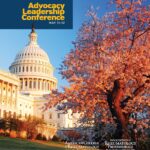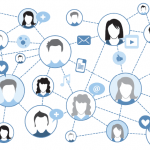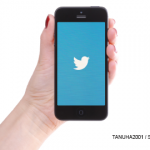Scrolling through your Twitter feed, a tweet catches your eye: “Great day. Helped anxious patient with poor health literacy understand and come to terms with #SLE diagnosis and agree to start treatment. #RheumTwitter”
The tweet, by a well-intentioned physician who cared deeply for her patient, resonated with many others and has been retweeted more than 30 times—leading to thousands of impressions. You immediately recognize that you are the patient about whom thousands of people are reading. The trust this physician worked so hard to establish is broken in 152 characters.
With 88% of physicians participating, the reach of social media (SoMe) is vast. Twitter has proved an effective tool for conducting health research, leading journal clubs, expanding engagement in national educational meetings, and recruiting and educating medical trainees.2-7 Many healthcare providers turn to Twitter to stay up to date in their fields, connect with colleagues, and enhance their presence and visibility. With immediate, unrestricted access to millions of users, Twitter fosters education, networking, dissemination of information and collaboration on a scale never before possible.
These same features present the potential for breach of ethical conduct. Professional organizations, such as the American Medical Association, provide guidance on the appropriate use of SoMe, but recommendations reflect the highly individualized nature of SoMe and, ultimately, encourage healthcare providers to recognize the potential negative effects and exercise caution.8
Therefore, users must regulate their own content to optimize the benefits of this platform without introducing avoidable risk.
Patient confidentiality: SoMe enables individuals to broadly share personal experiences. As clinicians, much of our day-to-day life comprises patient care. It can be tempting to share our patients’ stories, because they have undeniable value with respect to academic discourse, education and personal interest. A recent study demonstrated that when this is done, medical professionals often inadvertently and inappropriately share identifiable patient information—a breach of confidentiality with both ethical and legal implications.9
A possible litmus test when creating such posts: Could the patient, the patient’s friends or family members, or other healthcare providers recognize this patient from the provided information?
As rheumatologists, we are excited to tweet photos of rashes, deforming arthritis, sclerodactyly or intriguing imaging findings. The photos may be followed by “tweetorials,” providing others with intended educational content about a particular condition. Publishing such patient-related content in peer-reviewed journals involves a formal process through which written consent from patients is obtained and maintained for years. In contrast, tweets containing similar images may have a disclaimer stating the patient’s verbal consent was obtained prior to posting or the individual tweeting may avoid including images that reveal the patient’s face. Is this enough?
No universally accepted process exists for obtaining informed consent associated with SoMe, and patients cannot truly provide informed consent without having advance knowledge and seeing the posts themselves.
Patients can be identified not only by their eyes or face, but also by characteristic skin lesions, tattoos, deformities, jewelry, nail polish and more. Posting such content could be construed as sharing protected health information in violation of the Health Insurance Portability and Accountability Act (HIPAA). Thus, although verbal consent is preferred over no consent, it should not be interpreted as permission to freely post identifiable patient information.
Educational content vs. medical advice: Twitter is an efficient and effective medium for educating the medical community with posts sharing clinical pearls from a local Grand Rounds, evidence-based “tweetorials” and recently published literature. However, #RheumTwitter does not exist in a vacuum; public posts are viewable by anyone and may have unintended consequences. Consider the following example:
A rheumatologist posts about the benefits of one treatment regimen for rheumatoid arthritis (RA) over another. Both treatments follow guideline recommendations and have a similar evidence base, but this provider favors one treatment over the other, arguing in a tweet that one should be used more routinely. The rheumatologist uses the hashtag #RheumatoidArthritis in the post, making it easily visible to anyone searching that hashtag.
A patient with RA comes across the tweet and becomes concerned that she received the treatment this physician argues is inferior. The patient loses confidence in her provider and believes she may have received improper care. Rather than discussing her regimen with her own rheumatologist, she chooses to transition her care to a new rheumatologist.
Having scholarly discussions in non-medical settings carries a high risk for misinterpretation and misunderstanding. This can affect patients and clinicians. Twitter allows users to share data that have not undergone peer review, introducing the risk of misinformation. Propagation of inaccurate information, both by medical and non-medical people, was frequently observed, for example, during the COVID-19 pandemic.10
As tweets are composed, consider how they could be interpreted by different audiences to minimize potential harm. Similarly, when reading content, evaluate the credibility of the source and fact check claims whenever possible.
Professionalism: A common criticism of healthcare providers’ use of Twitter is the potential for promoting unprofessional behavior.11 Occasional posts contain profanity, while others share negative feelings toward patients, diagnoses or members of a healthcare team.
Some Twitter users create anonymous profiles using pseudonyms to hide their identity; while some of these profiles are maintained responsibly, anonymous profiles are more likely to display unprofessional behavior.12 Unprofessional tweets can be damaging to other healthcare providers, patients and the field at large.
When we identify as healthcare providers on Twitter, we should hold ourselves to the same standards of professionalism and ethical integrity we display in patient care every day.
In Sum
Despite its drawbacks, the utility of Twitter in rheumatology is vast. Through Twitter, some healthcare providers have become healthcare influencers, and others have used the outlet to stay informed, teach others or build a reputation. However, we must make every effort to tweet responsibly—maintaining high professional and ethical standards—to protect our patients, our colleagues and ourselves.
 Guy Katz, MD, is a second-year rheumatology fellow in the Division of Rheumatology, Allergy, and Immunology, Massachusetts General Hospital, Boston.
Guy Katz, MD, is a second-year rheumatology fellow in the Division of Rheumatology, Allergy, and Immunology, Massachusetts General Hospital, Boston.
 Minna J. Kohler, MD, RhMSUS, is the founder and director of the Rheumatology Musculoskeletal Ultrasound Program at Massachusetts General Hospital. She completed a clinical/research rheumatology fellowship at Yale University School of Medicine, New Haven, Conn.
Minna J. Kohler, MD, RhMSUS, is the founder and director of the Rheumatology Musculoskeletal Ultrasound Program at Massachusetts General Hospital. She completed a clinical/research rheumatology fellowship at Yale University School of Medicine, New Haven, Conn.
 Marcy B. Bolster, MD, is an associate professor of medicine at Harvard Medical School and director of the Rheumatology Fellowship Training Program at Massachusetts General Hospital.
Marcy B. Bolster, MD, is an associate professor of medicine at Harvard Medical School and director of the Rheumatology Fellowship Training Program at Massachusetts General Hospital.
References
- Social media in healthcare: A slippery slope. MedPro Group. 2019.
- Sinnenberg L, Buttenheim AM, Padrez K, et al. Twitter as a tool for health research: A systematic review. Am J Public Health. 2017 Jan;107(1):e1–8.
- Stoneman S, Hiremath S. Twitter-based journal clubs: Bringing critical appraisal to the social table. Semin Nephrol. 2020 May;40(3):264–272.
- Callister MN, Robbins MS, Callister NR, Vargas BB. Tweeting the headache meetings: Cross-sectional analysis of Twitter activity surrounding American Headache Society Conferences. Headache. 2019 Apr;59(4):518–531.
- D’Anna G, Chen MM, McCarty JL, et al. The continued rise in professional use of social media at scientific meetings: An analysis of Twitter use during the ASNR 2018 Annual Meeting. AJNR Am J Neuroradiol. 2019 Jun;40(6):935–937.
- Diug B, Kendal E, Ilic D. Evaluating the use of Twitter as a tool to increase engagement in medical education. Educ Health (Abingdon). 2016 Sep–Dec;29(3):223–230.
- Rein JL, Sparks MA, Hilburg R, Farouk SS. Tackling acid-base disorders, one Twitter poll at a time. Adv Physiol Educ. 2020 Dec 1;44(4):706–708.
- Professionalism in the use of social media. American Medical Association.
- Ahmed W, Jagsi R, Gutheil TG, Katz MS. Public disclosure on social media of identifiable patient information by health professionals: Content analysis of Twitter data. J Med Internet Res. 2020 Sep 1;22(9):e19746.
- Kouzy R, Abi Jaoude J, Kraitem A, et al. Coronavirus goes viral: Quantifying the COVID-19 misinformation epidemic on Twitter. Cureus. 2020 Mar 13;12(3):e7255.
- Pershad Y, Hangge PT, Albadawi H, Oklu R. Social medicine: Twitter in healthcare. J Clin Med. 2018 May 28;7(6):121.
- Brynolf A, Johansson S, Appelgren E, et al. Virtual colleagues, virtually colleagues—physicians’ use of Twitter: A population-based observational study. BMJ Open. 2013 Jul 24;3(7): e002988.
Editor’s note: If you have a case that you’d like to see in Ethics Forum, email us at [email protected].


